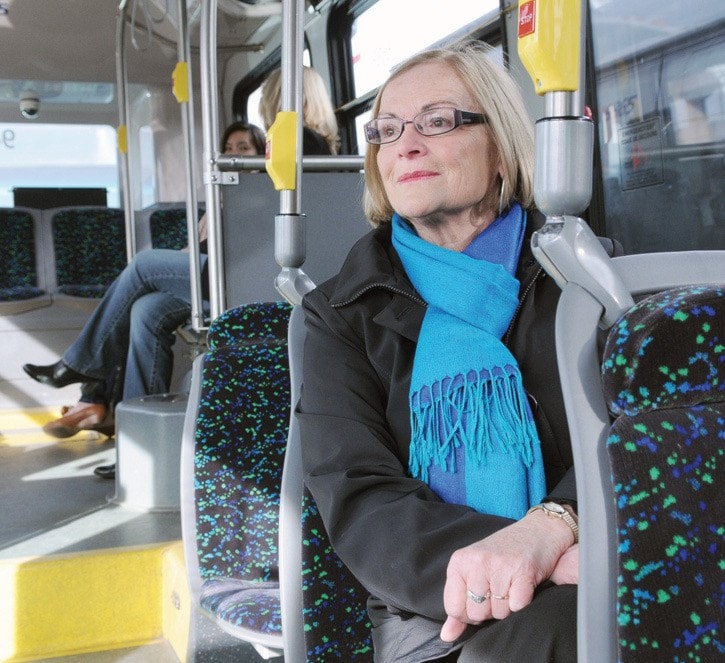Saanich is getting serious about changing the municipality’s current car culture.
Last week, council started the process to create a policy to ensure alternative transportation funding is expected anytime a developer wants a parking variance for a multi-family residential unit in the municipality.
“We want to try to maximize the potential of alternative transportation because (developers are) trying to reduce the amount of parking required, and we want people to be encouraged to move from the default position of always using a vehicle,” said Coun. Susan Brice, who chairs the planning, traffic and economic development committee.
“At this point, where we’re asking developers for just a ballpark amount of money (usually $1,000 per unit), saying it can be put towards transit passes, buying bikes or scooters – I think it just waters it down and we run the risk of having money put into a pot that doesn’t contribute to alternative transportation.”
Coun. Dean Murdock said developments will be judged individually so those in areas well-served by transit and bike routes are given more stringent requirements.
“There are advantages here for council, land-use planners, developers and ultimately the residents, (that will come from) locating these new developments with considerable density in major centres on major corridors,” he said. “The last thing you want to do is contribute to traffic in those corridors. So incentives need to be created for people to take public transit, or cycle or walk to their destination.”
Council has seen transit pass programs, bike purchases, car sharing options and shared electric vehicle purchases as commitments from developers.
“We need to explore the success and challenges that go along with those components, so the proponent (of a development) understands our expectations in advance,” Murdock said.
“That way council can take comfort that the proponent has considered the best incentives to encourage residents to choose alternative forms of transportation.”
The reason this is only now coming to the attention of councillors is because of a shift in the types of development being proposed to Saanich.
“We’re seeing more dense residential development in major centres. When you don’t have the surface available for parking, it means you have to go underground, which is a considerable expense for developers,” Murdock said. “Council can say that we’ll tolerate a variance, reduce the amount of parking stalls, and, in exchange, contribute a portion of the money a developer saves to alternative forms of transportation, so residents will not need those additional parking stalls.”
Brice expects the committee will have a policy outlining guidelines ready for council by late spring.
“Up until now, we’ve been working with goodwill. I think everybody’s been trying to advance the issue but it has to be more than just token. We have to look for ways to quantifiably say this investment is likely to result in a change of behaviour.”
kslavin@saanichnews.com
